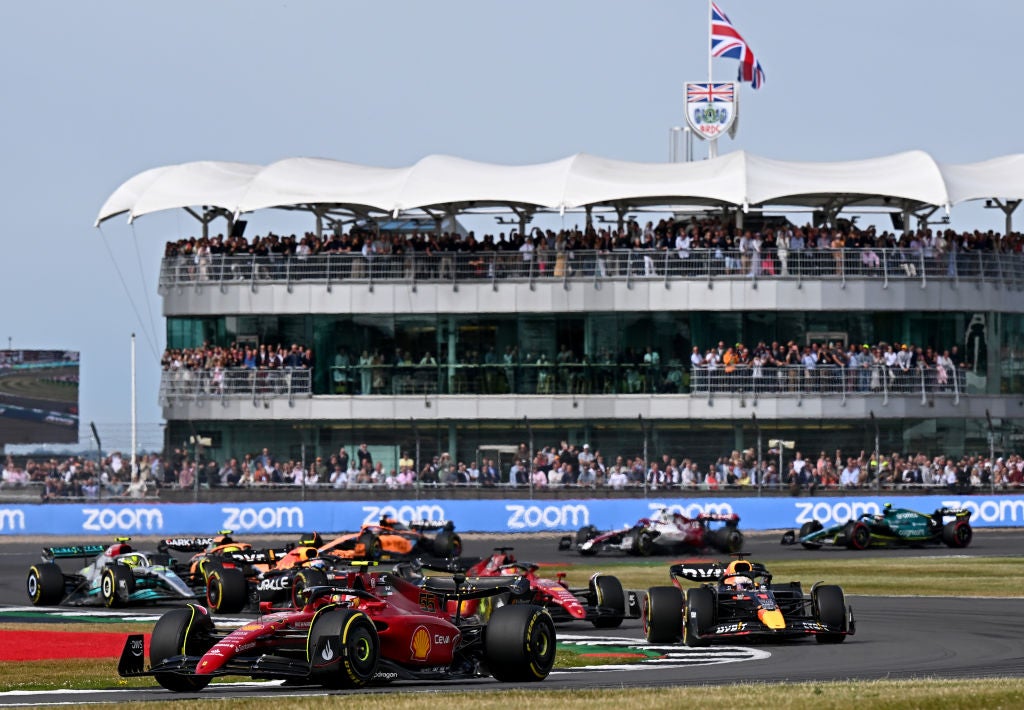Silverstone a ‘perfect demonstration’ of F1’s progress in safety and excitement, says Ross Brawn
Spectacular and scary scenes throughout the race day made for thrilling watching for all

Your support helps us to tell the story
From reproductive rights to climate change to Big Tech, The Independent is on the ground when the story is developing. Whether it's investigating the financials of Elon Musk's pro-Trump PAC or producing our latest documentary, 'The A Word', which shines a light on the American women fighting for reproductive rights, we know how important it is to parse out the facts from the messaging.
At such a critical moment in US history, we need reporters on the ground. Your donation allows us to keep sending journalists to speak to both sides of the story.
The Independent is trusted by Americans across the entire political spectrum. And unlike many other quality news outlets, we choose not to lock Americans out of our reporting and analysis with paywalls. We believe quality journalism should be available to everyone, paid for by those who can afford it.
Your support makes all the difference.The British Grand Prix provided a “perfect demonstration” of what Formula One aimed to achieve with its 2022 cars and how much safer the sport has become, according to managing director Ross Brawn.
The halo head protection system was credited with saving the life of Chinese driver Guanyu Zhou after a huge first-lap crash while Sunday’s race at Silverstone had close racing and thrilling overtakes.
Ferrari’s Carlos Sainz won the race for his first victory in Formula One.
“What pleased me was the precision the drivers could have with the cars. We saw countless fascinating battles that went for several corners, with multiple changes of position,” Brawn said in a column on the F1 website.
“We saw drivers were able to take multiple lines with these new cars -- and that allowed for two, three or even four cars going almost side-by-side. The quality of the passes was high, too,” he added.
Brawn, a former team boss and technical director, said the drivers had been positive about the change and ability to follow closely the cars in front without turbulence.
He said many had observed they had a much better chance of forcing a mistake by being able to sit on the tail of another driver.
“The frequency where cars are following for consecutive laps and challenging for consecutive laps is much better this year than in previous years,” said Brawn.
He said that showed the sport and governing FIA had taken the right direction with the aerodynamic rule changes introduced this season to make racing closer and more exciting.
“The introduction of raceability is going to be a significant change for F1 for the future,” said Brawn.
“If there is a legacy of this era, it will be that raceability is now going to be a factor that is always considered when new cars are designed for Formula One. Weâve not seen that before.”
On the safety features playing a huge role on the day, Brawn revealed relief that two drivers taken to the medical centre were safely discharged later on.
“It was a relief to see Zhou Guanyu and Alex Albon are okay after big impacts – and once again, a fine example of the progress Formula 1 and the FIA have made with safety.”
Additional reporting by Reuters
Join our commenting forum
Join thought-provoking conversations, follow other Independent readers and see their replies
Comments